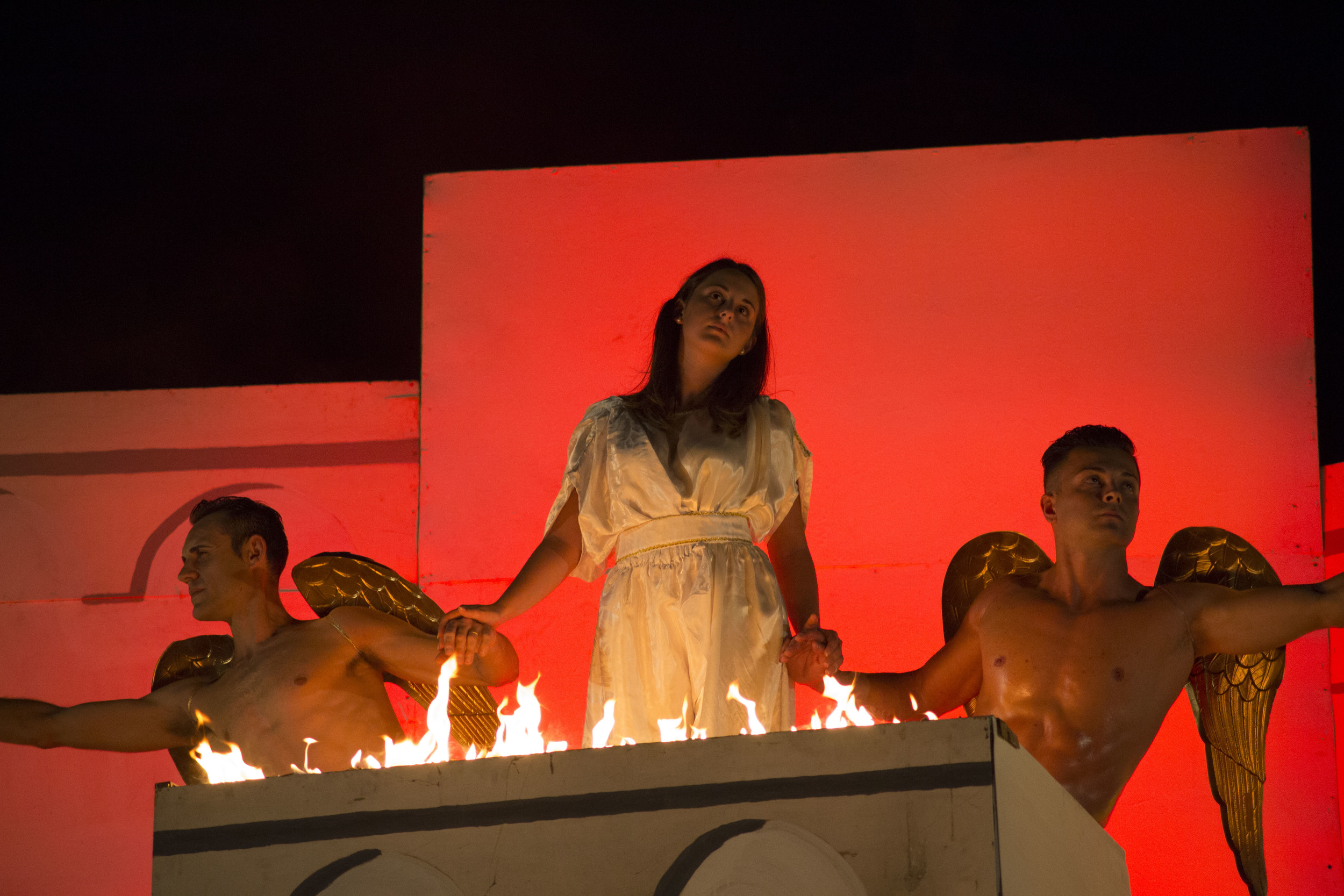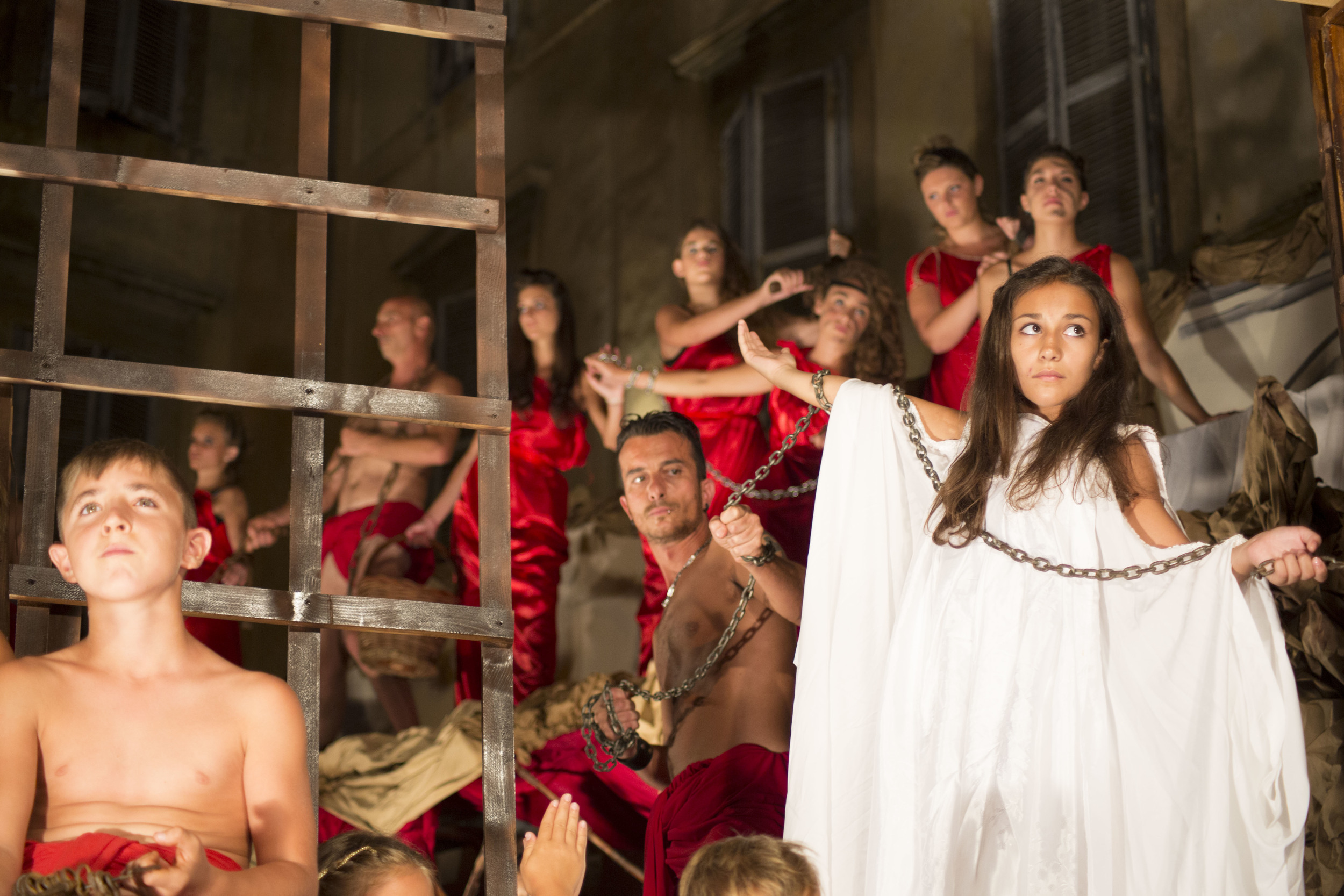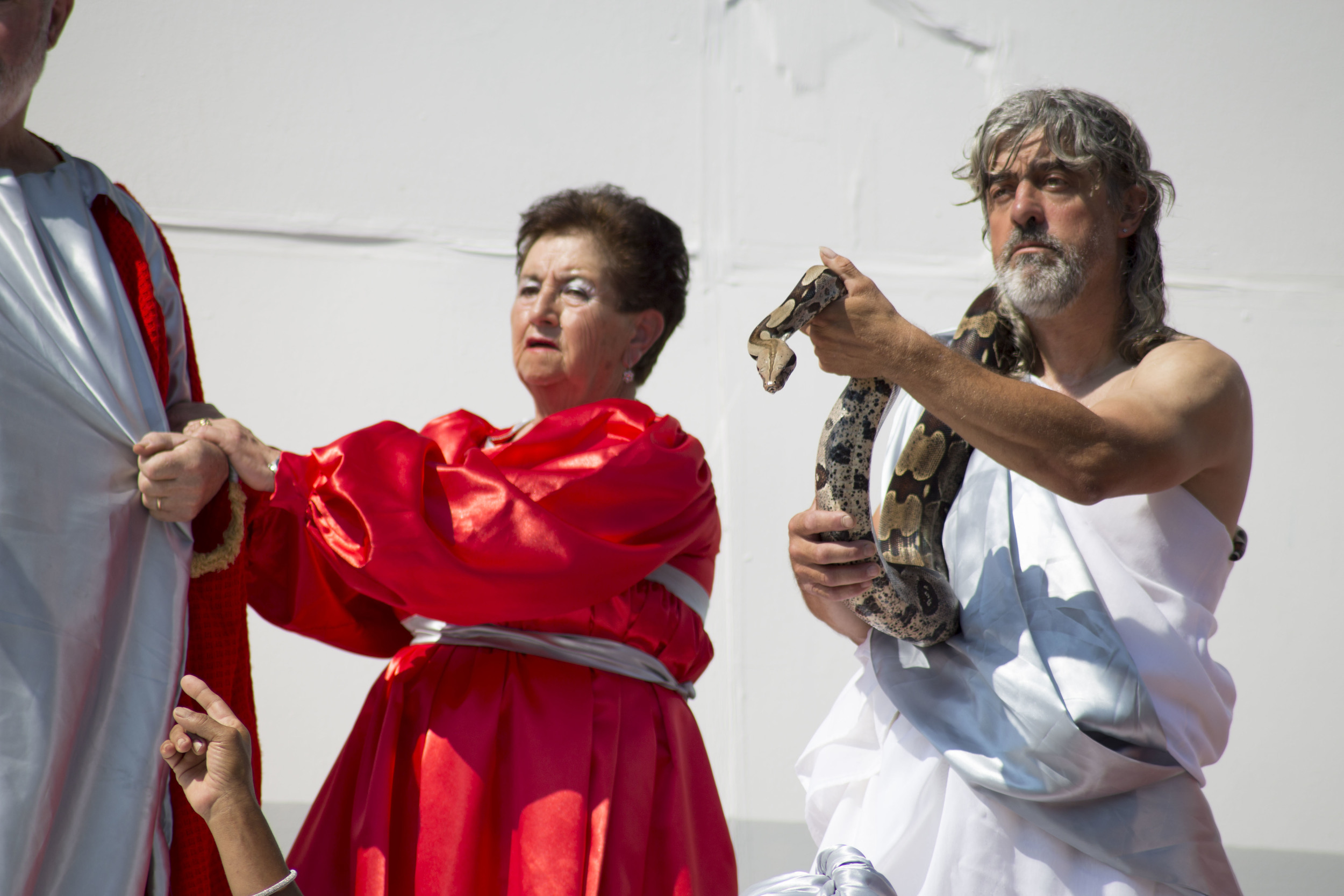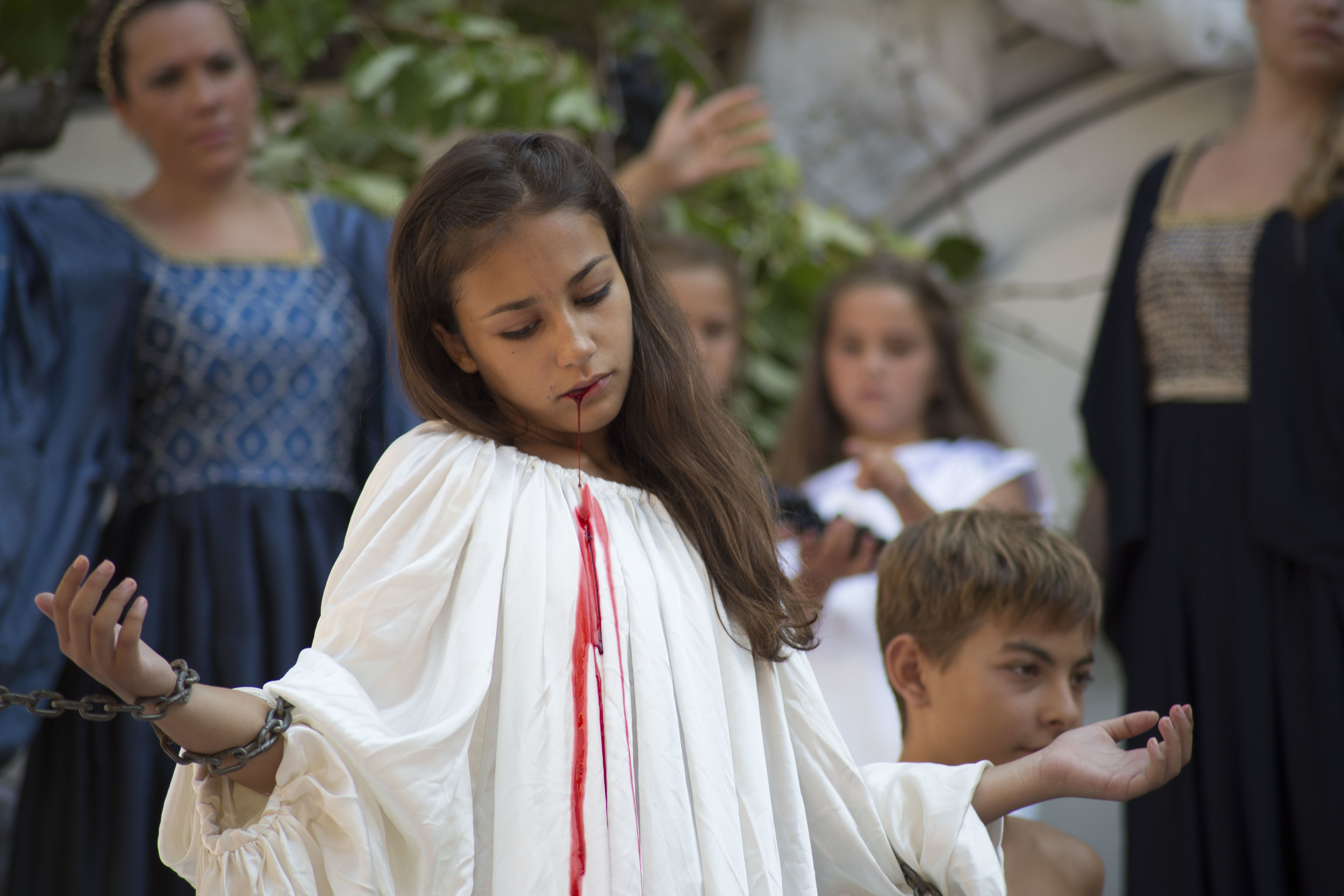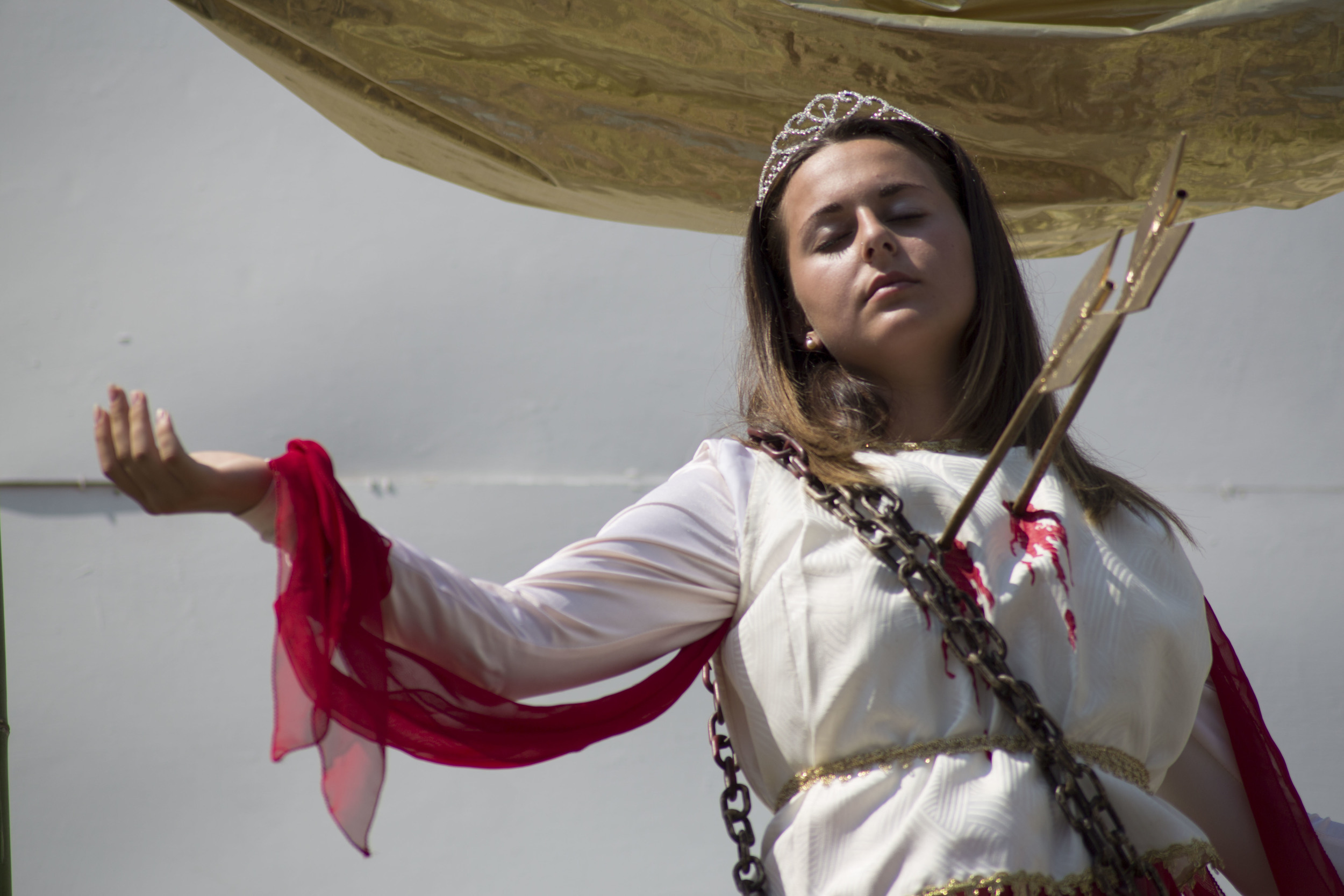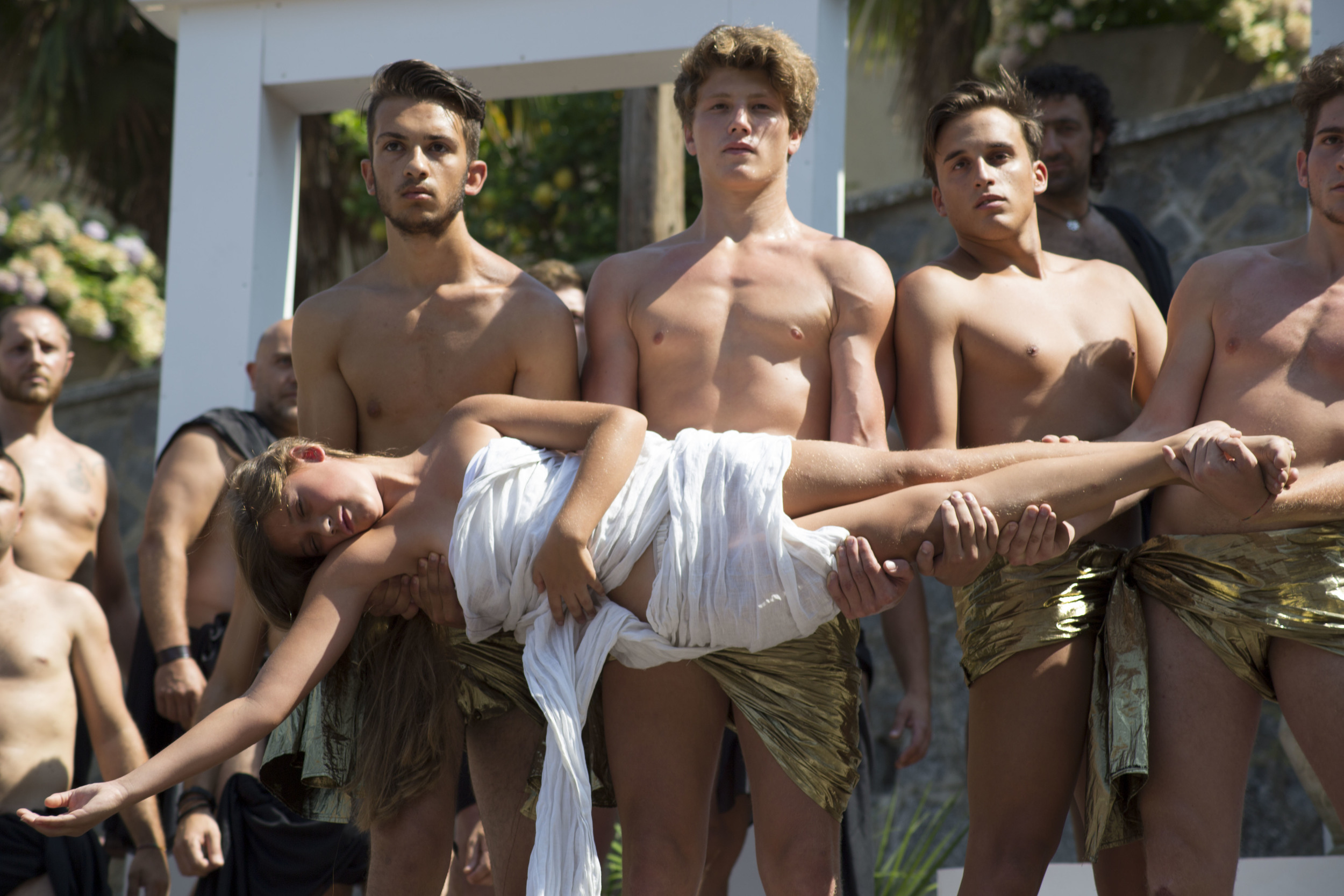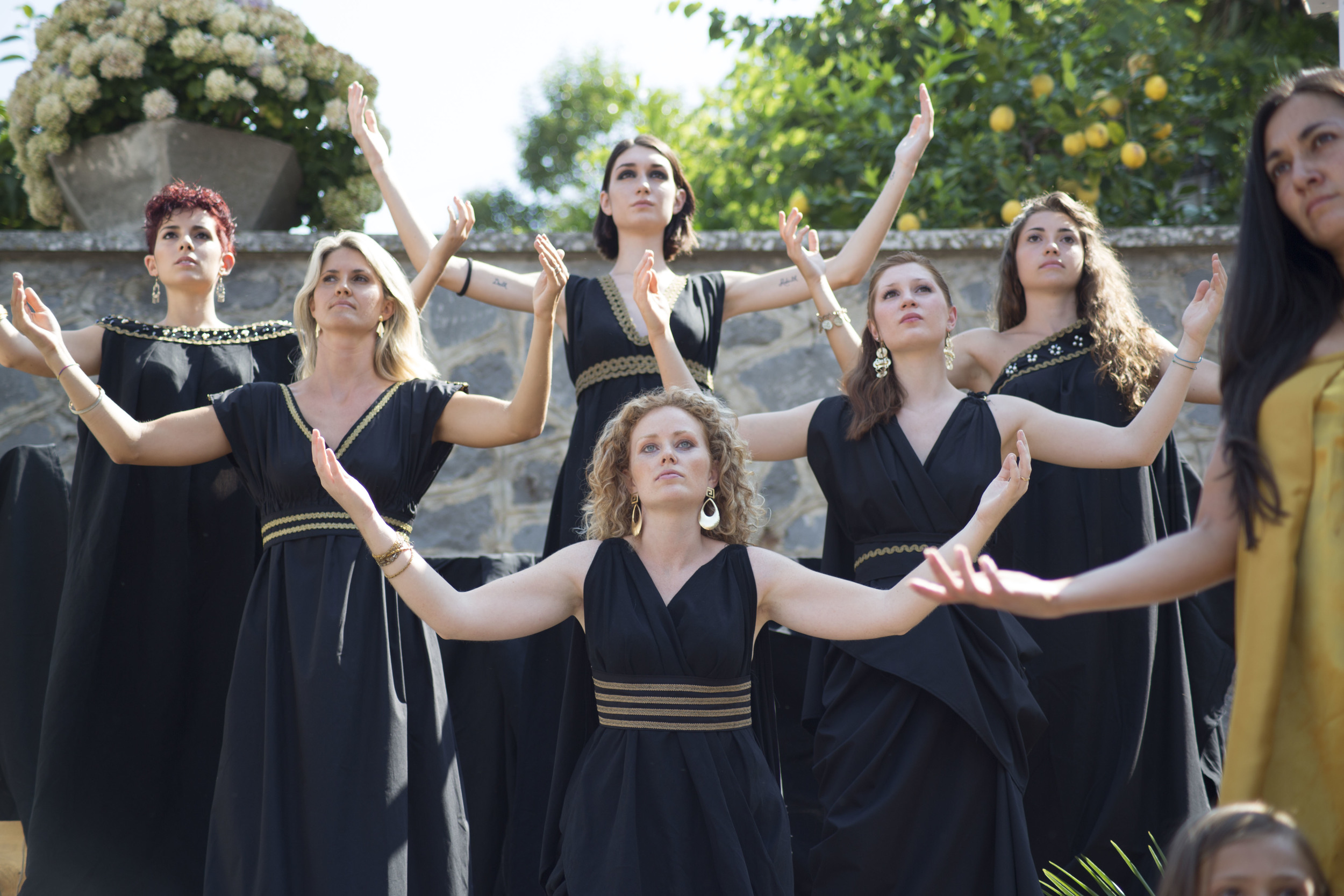The Mysteries of Saint Cristina
This is a translation I did of a fantastic Italian piece written by my friend Ivan Cenzi of Bizzarro Bazar. Click here to see lots more of his photos of the sacred representation that's still performed today in Bolsena, Italy. The performance is part parade, part tableau, part mass and part dance piece. It depicts the martyrdom of St. Cristina over two days.
You may recall the concept of sacred representations from my posts on the unusual ones that used to incorporate real corpses. All of these actors are alive and well, but the death of the martyr is no less graphic.
(And while you’re over at Bizzarro Bazar, do yourself a favor and order a copy of Ivan’s books on the Fontanelle Cemetery in Naples and the Catacombs in Palermo. They have gorgeous photos and they’re written in Italian and English.)
_____________________________________
Two days ago, one of the most unusual solemnities in Italy was held as usual: the “Mysteries” of Saint Cristina of Bolsena, a martyr who lived in the early fourth century.
Every year on the night of July 23rd, the statue of St. Cristina is carried in a procession from the basilica to the church of St. Salvatore in the highest and oldest part of the village. The next morning, the statue follows the path in reverse. The procession stops in five town squares where wooden stages are set up. Here, the people of Bolsena perform ten tableaux vivants that retrace the life and martyrdom of the saint.
These sacred representations have intrigued anthropologists and scholars of theater history and religion for more than a century. Their origins lie in the fog of time.
In our article Ecstatic Bodies, which is devoted to the relationship between the lives of the saints and eroticism, we mentioned the martyrdom of St. Cristina. In fact, her hagiography is (in our opinion) a masterful little narrative, full of plot twists and underlying symbolism.
According to tradition, Cristina was a 12-year old virgin who secretly converted to Christianity against the wishes of her father, Urbano. Urbano held the position of Prefect of Volsinii (the ancient name for Bolsena). Urbano tried every way of removing the girl from the Christian faith and bringing her back to worship pagan gods, but he was unsuccessful. His “rebellious” daughter, in her battle against her religious father, even destroyed the golden idols and distributed the pieces to the poor. After she stepped out of line again, Urban decided to bend her will through force.
It is at this point the legend of St. Cristina becomes unique. It becomes one of the most imaginative, brutal, and surprising martyrologies that has been handed down.
Initially, Cristina was slapped and beaten with rods by twelve men. They became exhausted little by little, but the strength of Cristina’s faith was unaffected. So Urbano commanded her to be brought to the wheel, and she was tied to it. When the wheel turned, it broke the body and disarticulated the bones, but that wasn’t enough. Urban lit an oil-fueled fire under the wheel to make his daughter burn faster. But as soon as Cristina prayed to God and Jesus, the flames turned against her captors and devoured them (“instantly the fire turned away from her and killed fifteen hundred persecutors and idolaters, while St. Cristina lay on the wheel as if she were on a bed and the angels served her”).
So Urbano locked her up in prison where Cristina was visited by her mother - but not even maternal tears could make it stop. Desperate, her father sent five slaves out at night. They picked up the girl, tied a huge millstone around her neck and threw her in the dark waters of the lake.
The next morning at dawn, Urbano left the palace and sadly went down to the shore of the lake. But suddenly he saw something floating on the water, a kind of mirage that was getting closer. It was his daughter, as a sort of Venus or nymph rising from the waves. She was standing on the stone that was supposed to drag her to the bottom; instead it floated like a small boat. Seeing this, Urban could not withstand such a miraculous defeat. He died on the spot and demons took possession of his soul.
But Cristina’s torments were not finished: Urbano was succeeded by Dione, a new persecutor. He administered his cruelty by immersing the virgin in a cauldron of boiling oil and pitch, which the saint entered singing the praises of God as if it were a refreshing bath. Dione then ordered her hair to be cut and for her to be carried naked through the streets of the city to the temple of Apollo. There, the statue of the god shattered in front of Cristina and a splinter killed Dione.
The third perpetrator was a judge named Giuliano: he walled her in a furnace alive for five days. When he reopened the oven, Cristina was found in the company of a group of angels, who by flapping their wings held the fire back the whole time.
Giuliano then commanded a snake charmer to put two vipers and two snakes on her body. The snakes twisted at her feet, licking the sweat from her torments and the vipers attached to her breasts like infants. The snake charmer agitated the vipers, but they turned against him and killed him. Then the fury and frustration of Giuliano came to a head. He ripped the breasts off the girl, but they gushed milk instead of blood. Later he ordered her tongue cut out. The saint collected a piece of her own tongue and threw it in his face, blinding him in one eye. Finally, the imperial archers tied her to a pole and God graciously allowed the pains of the virgin to end: Cristina was killed with two arrows, one in the chest and one to the side and her soul flew away to contemplate the face of Christ.
In the previous article we addressed the undeniable sexual tension present in the character of Cristina. She is the untouchable female, a virgin whom it’s not possible to deflower by virtue of her mysterious and miraculous body. The torturers, all men, were eager to torture and punish her flesh, but their attacks inevitably backfired against them: in each episode, the men are tricked and impotent when they’re not metaphorically castrated (see the tongue that blinds Giuliano). Cristina is a contemptuous saint, beautiful, unearthly, and feminine while bitter and menacing. The symbols of her sacrifice (breasts cut off and spewing milk, snakes licking her sweat) could recall darker characters, like the female demons of Mesopotamian mythology, or even suggest the imagery linked to witches (the power to float on water), if they were not taken in the Christian context. Here, these supernatural characteristics are reinterpreted to strengthen the stoicism and the heroism of the martyr. The miracles are attributed to the angels and God; Cristina is favored because she accepts untold suffering to prove His omnipotence. She is therefore an example of unwavering faith, of divine excellence.
Without a doubt, the tortures of St. Cristina, with their relentless climax, lend themselves to the sacred representation. Because of this, the “mysteries”, as they are called, have always magnetically attracted crowds: citizens, tourists, the curious, and groups arrive for the event, crowding the narrow streets of the town and sharing this singular euphoria. The mysteries selected may vary. This year on the night of 23rd, the wheel, the furnace, the prisons, the lake, and the demons were staged, and the next morning the baptism, the snakes, the cutting of the tongue, the arrows and the glorification were staged.
The people are immobile in the spirit of the tableaux vivant and silent. The sets are in some cases bare, but this ostentatious poverty of materials is balanced by the baroque choreography. Dozens of players are arranged in Caravaggio-esque poses and the absolute stillness gives a particular sense of suspense.
In the prison, Cristina is shown chained, while behind her a few jailers cut the hair and amputate the hands of other unfortunate prisoners. You might be surprised by the presence of children in these cruel representations, but their eyes can barely hide the excitement of the moment. Of course, there is torture, but here the saint dominates the scene with a determined look, ready for the punishment. The players are so focused on their role, they seem almost enraptured and inevitably there is someone in the audience trying to make them laugh or move. It is the classic spirit of the Italians, capable of feeling the sacred and profane at the same time; without participation failing because of it. As soon as they close the curtain, everyone walks back behind the statue, chanting prayers.
The scene with the demons that possess the soul of Urbano (one of the few scenes with movement) ends the nighttime procession and is undoubtedly one of the most impressive moments. The pit of hell is unleashed around the corpse of Urbano while the half-naked devils writhe and throw themselves on each other in a confusion of bodies; Satan, lit in bright colors, encourages the uproar with his pitchfork. When the saint finally appears on the ramparts of the castle, a pyrotechnic waterfall frames the evocative and glorious figure.
The next morning, on the feast of St. Cristina, the icon traces the same route back and returns to her basilica, this time accompanied by the band.
Even the martyrdom of snakes is animated. The reptiles, which were once collected near the lake, are now rented from nurseries, carefully handled and protected from the heat. The torturer agitates the snakes in front of the impassive face of the saint before falling victim to the poison. The crowd erupts into enthusiastic applause.
The cutting of the tongue is another one of those moments that would not be out of place in a Grand Guignol performance. A child holds out a knife to the executioner, who brings the blade to the lips of the martyr. Once the tongue is severed, she tilts her head as blood gushes from her mouth. The crowd is, if anything, even more euphoric.
Here Cristina meets her death with two arrows planted in her chest. The last act of her passion happens in front of a multitude of hard-eyed and indifferent women, while the ranks of archers watch for her breathing to stop.
The final scene is the glorification of the saint. A group of boys displays the lifeless body covered with a cloth, while chorus members and children rise to give Cristina offerings and praise.
One striking aspect of the Mysteries of Bolsena is their undeniable sensuality. It’s not just that young, beautiful girls traditionally play the saint, even the half-naked male bodies are a constant presence. They wear quivers or angel wings; they’re surrounded by snakes or they raise up Cristina, sweetly abandoned to death, and their muscles sparkle under lights or in the sun, the perfect counterpoint to the physical nature of the passion of the saint. It should be emphasized that this sensuality does not detract from the veneration. As with many other folk expressions common in our peninsula, the spiritual relationship with the divine becomes intensely carnal as well.
The legend of St. Cristina effectively hides an underlying sexual tension and it is remarkable that such symbolism remains, even in these sacred representations (heavily veiled, of course). While we admire the reconstructions of torture and the resounding victories of the child martyr and patron saint of Bolsena, we realize that getting onstage is not only the sincere and spontaneous expression in the city. Along with the miracles they’re meant to remember, the tableaux seem to allude to another, larger “mystery”. These scenes appear fixed and immovable, but beneath the surface there is bubbling passion, metaphysical impulses and life.
